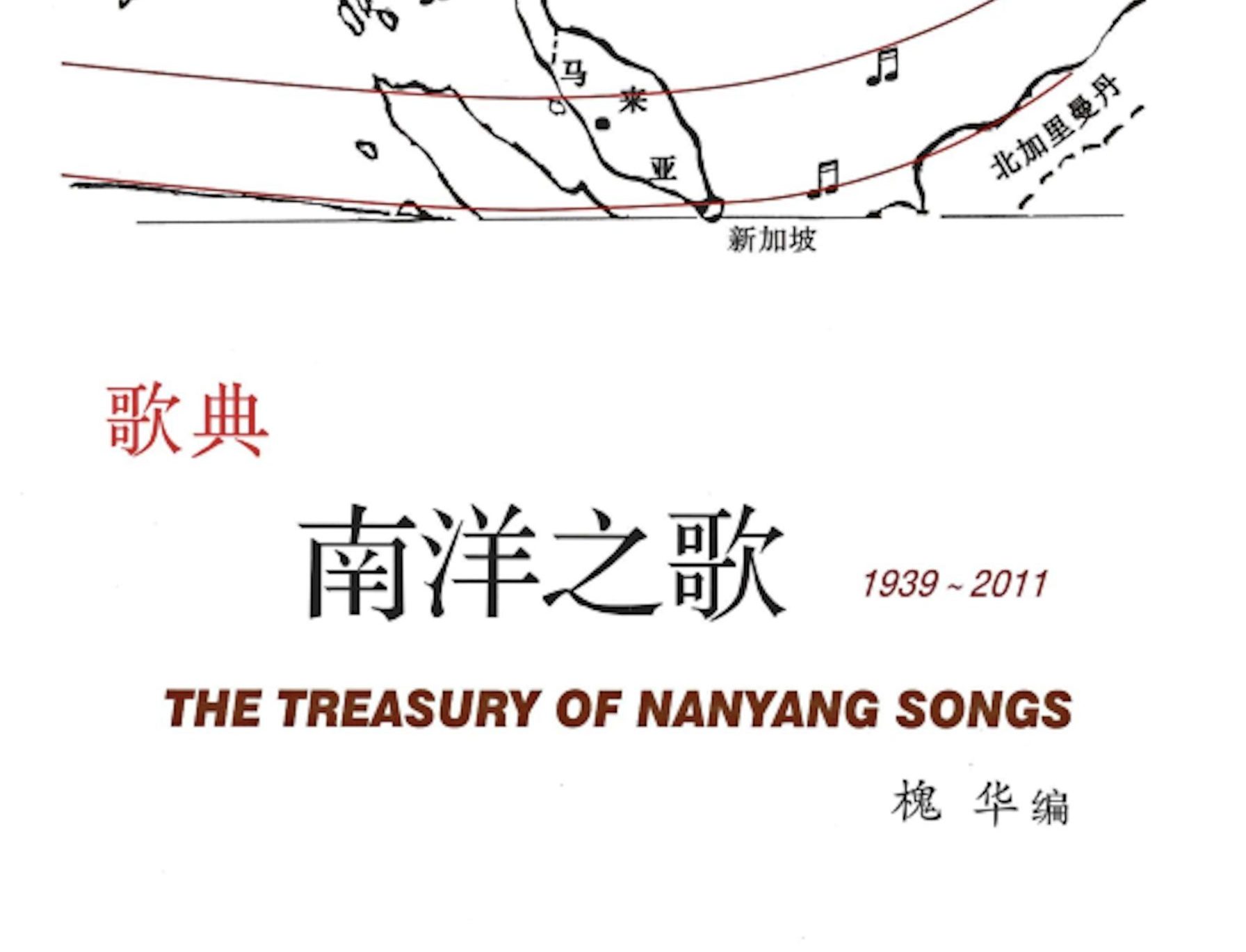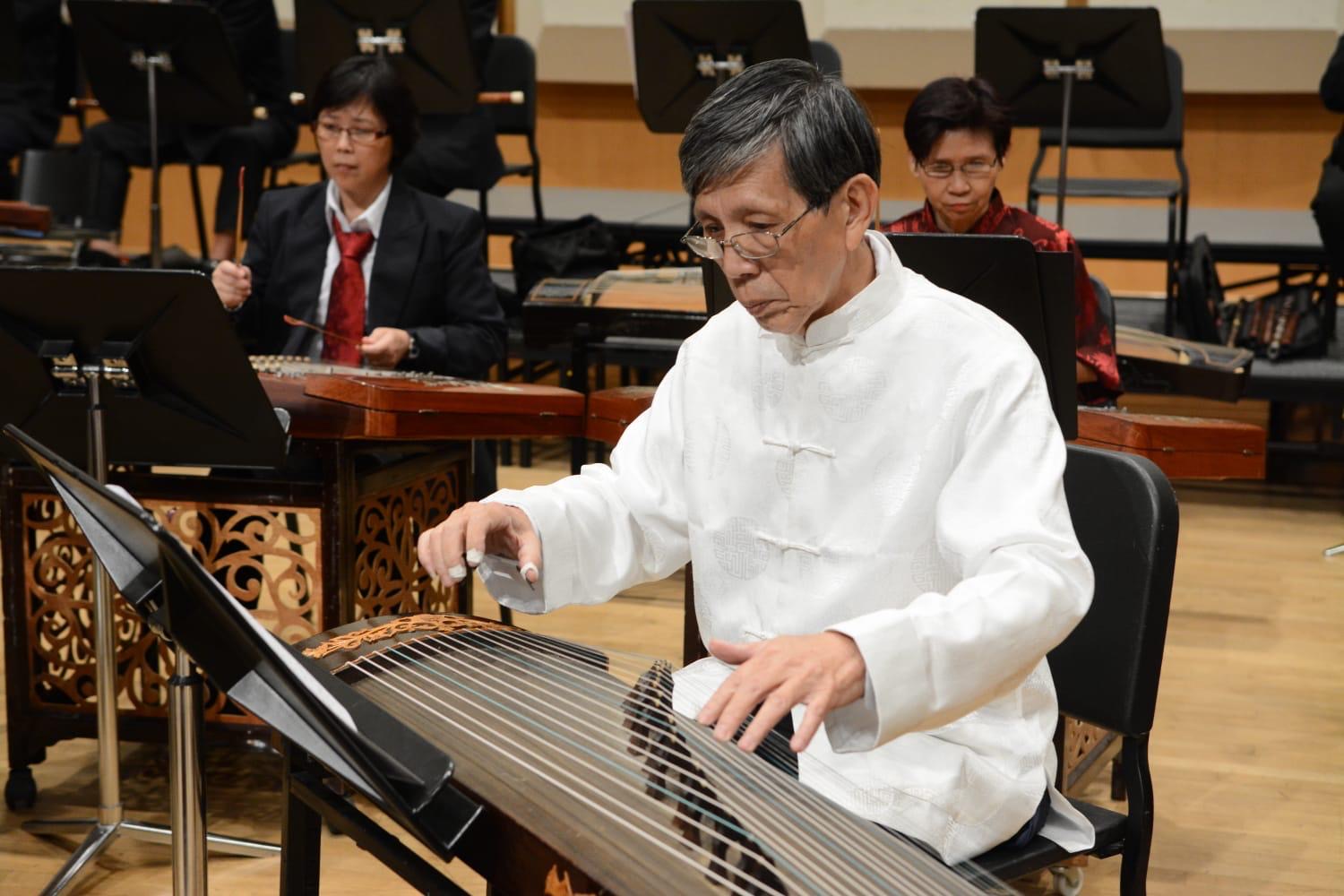Shidaiqu in Singapore’s Cantopop scene: Lisa Wong’s ‘Lovesick Tears’ (1972)
The term “Cantonese music” originally encompassed Cantonese opera music, traditional narrative singing such as Namyaam, and in its narrow sense, Chinese instrumental music originated from Guangdong province.1 In a broader sense, however, it can refer to music from the Guangdong province of China — including Cantonese music, Teochew music and Hakka music.2 When discussing instrumental music, the terms “Cantonese music” (yue yue 粤乐) and “Guangdong music” (Guangdong yinyue 广东音乐) are largely interchangeable.
Cantonese opera music, tunes (xiaoqu) and pop songs incorporated many popular shidaiqu — “songs of the era” which had originated in Shanghai from the 1930s to 1950s.3 A key example would be Lovesick Tears, a 1972 pop song by Singaporean singer Lisa Wong. Its melody came from Four Seasons of Lovesickness (1940), a shidaiqu sung by Zhou Xuan (1920–1957).4 The lyrics of Wong’s song were written by Malaysian singer Kok Peng Kin (1933–2015). They were direct and accessible, and made use of old Cantonese colloquialisms (“You left with no explanation for the betrayal…Why did you not write any letters?”) that gave it a flavour reminiscent of the earlier decades of the 20th century.



From Four Seasons of Lovesickness to Lovesick Tears
Although the shidaiqu Four Seasons of Lovesickness was sung in Mandarin, the accompaniment featured mainly instruments that were commonly used in Cantonese music — including the stringed gaohu, and woodwinds such as houguan, dizi, and saxophone. The musicians also performed in the style of Cantonese music,5with the gaohu sounding like it could have been played by famous musician Lü Wencheng (1898–1981).6
In contrast, Wong’s Lovesick Tears used only Western instruments such as the electric guitar, electronic keyboard, and jazz drums. Wong did not employ the falsetto used in Cantonese opera or operatic songs, but chose to sing in the style of general pop songs. She also used vibrato, a technique popular among Taiwanese Chinese singers then, while sustaining long notes. Only her pronunciation and tone of voice were closer to Cantonese music.
Neither Kok, Cheng Kam Cheong (1941–2019), nor the numerous female singers who later covered Lovesick Tears had as far-reaching an impact as Wong did in her 1972 version.7
Nostalgia for the early 1900s
The Cantonese spoken by the Chinese community in Southeast Asia in the 1970s was similar to what was used two generations ago in Hong Kong, as heard in Cantonese movies from the 1940s and 1950s. Wong had learned her Cantonese lyrics using English phonetics,8 and her pronunciation was somewhat exaggerated and weepy in diction. Her accent, tone, and vocalisations, as well as Kok’s lyrics, created a Cantonese flavour that allowed listeners to reminisce and reimagine a soundscape of oldies — as well as an older form of spoken Cantonese — from two generations ago. It evoked memories of the early 1900s.
The success of Wong’s Lovesick Tears came after Singapore artiste Seong Koon Low Won’s (1922–2002) hit song Can’t Buy Me Love from the 1960s, whose melody came from the Beatles song of the same name. They are examples of Nanyang Cantonese pop songs which made waves in the Hong Kong music scene — reflecting how the Cantonese cultures of Hong Kong, Singapore, and Malaysia were closely related and influenced one another after 1949 and into the early 1970s.
This is an edited and translated version of 华语时代曲粤唱:丽莎《相思泪》(1972). Click here to read original piece.
| 1 | For a relevant discussion, refer to Yu Siu Wah, “Cong xian ge bi du dao guo yue xin sheng: Qiu Hechou de yue yue chu ban ding wei” [From Xiange bidu (vocal music with strings) to Guoyue xinsheng (new voices of national Music): Qiu Hechou’s re-positioning of Cantonese Music] HKU Journal of Chinese Studies (2023): 113–144. |
| 2 | For a relevant discussion, refer to Yu Siu Wah, “Yue, Chao, Ke yin yue zai Xianggang de li shi shi kuang” [The historical facts of Cantonese, Teochew, and Hakka music in Hong Kong] Hong Kong Economic Journal, 24 January 2018. |
| 3 | For a discussion on the incorporation of shidaiqu in Cantonese pop songs, refer to Yu Siu Wah, “Zhou Xuan yu Chen Gexin zai sishi niandaimo de Xianggang dianying” [Zhou Xuan and Chen Gexin in Hong Kong movies of the late 1940s] In Exploring Hong Kong Films of the 1930s and 1940s Part 2: Genres · Regions · Culture (Chinese edition), eds. Kwok Ching-ling and May Ng (Hong Kong: Hong Kong Film Archive, 2022), 310–312. For a discussion on the adaptation of music from other Chinese provinces (waisheng yinyue) to Cantonese, refer to Yu Siu Wah, “The making of a Cantonese popular song amidst national crises in China: from Jiang Jun Ling to ‘Once Upon a Time in China,’” in Natural Disasters and Reconstruction in Asian Economies, ed. Yau Shuk-ting, Kinnia (New York: Palgrave Macmillan Press, 2013), 151–170. |
| 4 | Yu Siu Wah, “Zhou Xuan yu Chen Gexin zai sishi niandaimo de Xianggang dianying” [Zhou Xuan and Chen Gexin in Hong Kong movies of the late 1940s], in Exploring Hong Kong Films of the 1930s and 1940s Part 2: Genres · Regions · Culture (Chinese edition), 304–319; Yu Siu Wah, “Movies and politics in the history of a Chinese popular song: from Tang Wei, Li Koran, Zhou Xuan to Abing the Blind”, Asian Musicology 17 (2011): 105–142. |
| 5 | The accompaniment for Zhou Xuan’s two other famous songs, “Farewell to My Beloved” (Song Jun) and “The Flower Girl” (Hua Hua Gu Niang) also used the same Cantonese musical instruments and performance style. |
| 6 | Even though Lü Wencheng had left to live in Hong Kong after the 1932 Shanghai incident (also known as the January 28 incident), it was possible that he had returned to Shanghai for recording sessions between 1939 and 1940. |
| 7 | Kok Peng Kin may have sung “Lovesick Tears” earlier, but he only had it recorded twice in 1978 and 1981. The circumstances under which he wrote lyrics for Lisa Wong in 1972 are still being researched. |
| 8 | See “Yueyu geshou Lisha” [The Cantonese singer Lisa Wong]. Liguo huiyilu [Merdeka memories], in Hello Singapore, Mediacorp Channel 8, 5 September 2019. |
Baranovitch, Nimrod. China’s New Voices: Popular Music, Ethnicity, Gender and Politics, 1978–1997. Berkeley & Los Angeles: University of California Press, 2003. | |
Jones, Andrew. Yellow Music: Media Culture and Colonial Modernity in the Chinese Jazz Age. Durham, North Carolina: Duke University Press, 2001. | |
Wong, Chi-wah. Zaoqi xianggang yueyu liuxingqu: 1950–1974 [Popular Cantonese songs of Hong Kong in the early days: 1950–1974]. Hong Kong: Joint Publishing, 2000. | |
Yang, Hon-lun and Yu, Siu Wah. Yueyu gequ jiedu: tuibianzhong de xianggang shengyin [Reading Cantonese songs: the voice of Hong Kong through vicissitudes]. Hong Kong: Infolink Publishing, 2013. | |
Yu, Siu Wah and Eva Wong Hiu Ching, “Xiangxiang ao yue” [Imagine Cantonese music]. Yueyue tongxun 1 (2018): 2–14. |










